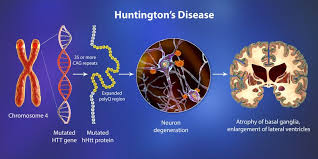A new approach offers hope for early diagnosis and potential treatment strategies
A team of scientists at Lancaster University in the UK has pioneered non-invasive measurement techniques and novel analysis methods to decode the progression of Huntington’s disease and assess the impact of potential treatments or lifestyle changes. Their groundbreaking research, published in the journal Brain Communications, holds promise for earlier diagnosis and new therapeutic avenues for this debilitating condition.
Huntington’s disease is a genetic disorder characterized by the gradual breakdown and death of the brain’s nerve cells, leading to dementia and a progressive decline in movement, memory, and cognitive abilities. Currently, there is no cure for Huntington’s disease, making the search for effective treatments and early detection methods crucial.
The Lancaster University team, led by Professor Aneta Stefanovska, has demonstrated that Huntington’s disease not only impacts nerve cells in the brain but also has widespread effects on microscopic blood vessels. Significantly, these changes were observed even before the onset of symptoms, highlighting the potential for this research to predict brain health and evaluate the beneficial effects of treatments or lifestyle modifications.
“We hope that the novel method can help monitor disease progression and evaluate the effect of potential treatments or lifestyle changes in people with Huntington’s and other neurodegenerative diseases,” said Professor Stefanovska. She further noted that the study could lead to “new treatments of Huntington’s disease targeting the vasculature and brain metabolism.”
In their study, the team investigated changes in the coordination between neuronal activity and the brain’s oxygenation in Huntington’s disease patients. They utilized non-invasive techniques, placing probes emitting infrared light on the participants’ heads to measure brain blood oxygenation. Additionally, they used electrodes to record the electrical activity of neurons.
By analyzing these measurements with advanced mathematical techniques, the researchers studied various physiological rhythms, including heart and respiration rates, which are crucial for nutrient and oxygen transport, and slower rhythms associated with local blood flow control. They found that the efficient functioning of the brain relies on the harmonious orchestration of these rhythms.
This innovative approach offers a new window into understanding Huntington’s disease, providing hope for earlier detection and more effective interventions. As the research progresses, it could pave the way for new treatments targeting both the vasculature and brain metabolism, potentially improving the quality of life for those affected by this devastating disease.











